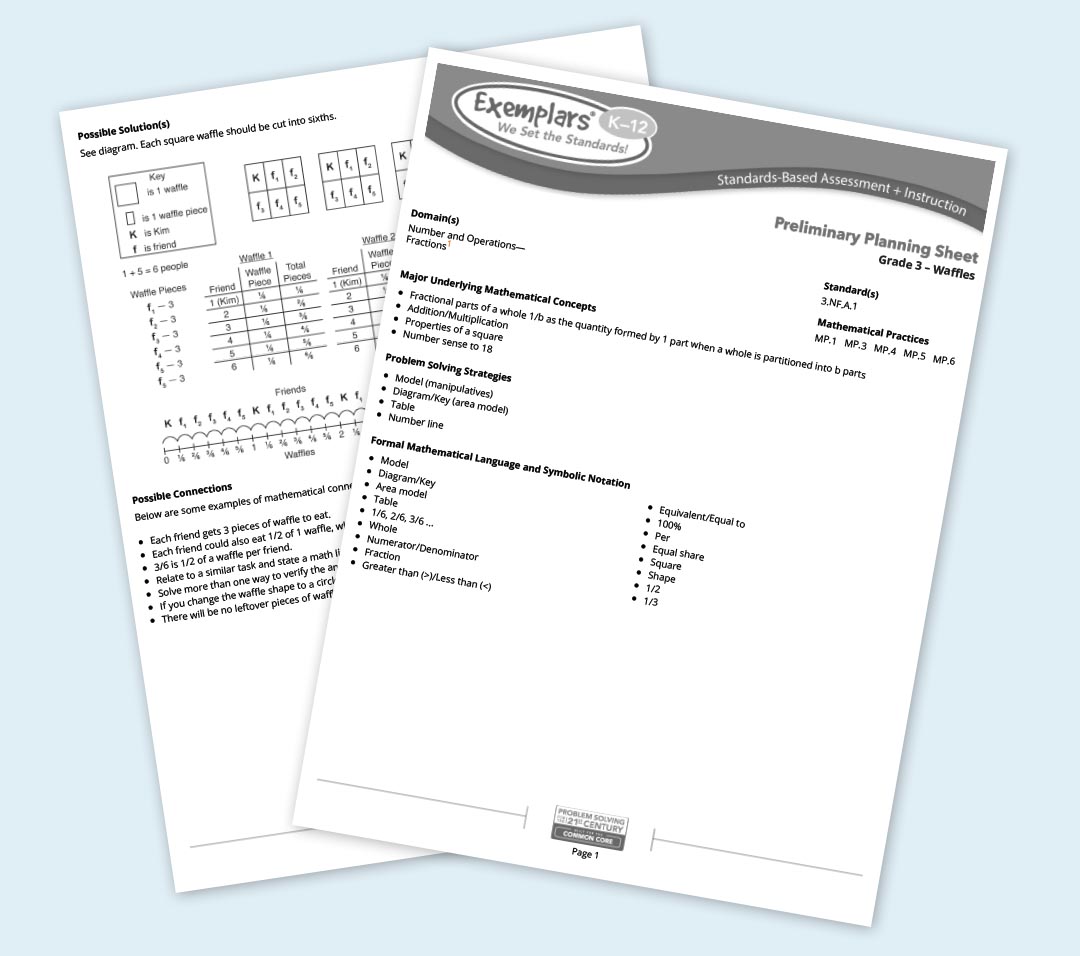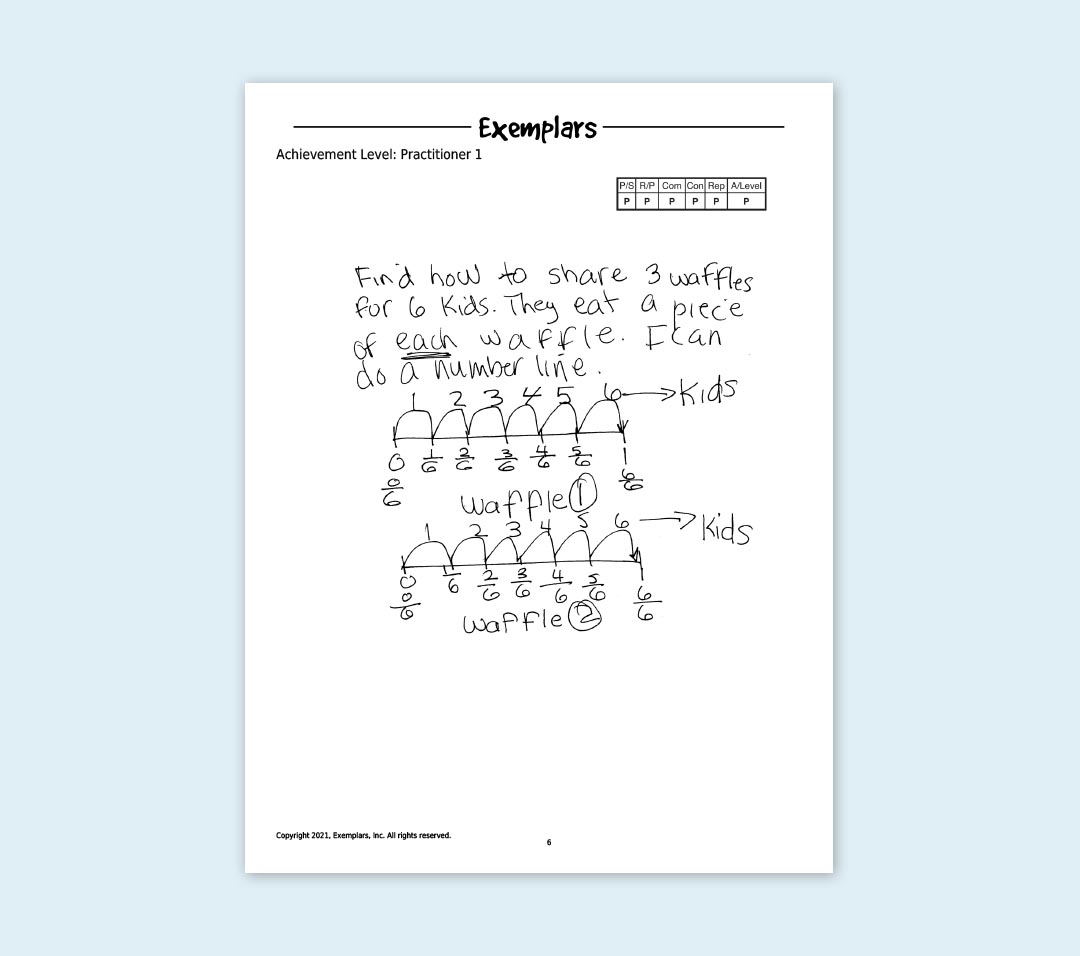Step 1: How to Unpack a Problem-Solving Task
Welcome to The Path to Successful Problem Solving: 5 Steps to Use in Your Classroom—our deep dive into using rich performance tasks to build students’ problem-solving skills. For Step 1, we’ll look at how to get your students started with a task—to make sure they have a conceptual grasp of what the task requires, but also to get them engaged and invested in finding a solution.
For students to realize the full benefits of authentic problem-solving tasks, you need strategies to help them successfully read and unpack these rigorous problems. There are several elements Exemplars has learned and tested over the last 30 years that have proven to be effective in helping students better understand these types of problems.
# 1 - Solve the task yourself
# 2 - Engage students in the problem you are going to ask them to solve
# 3 - Apply a reading strategy that will help students analyze the problem and understand what they need to solve
One of the most important decisions a teacher makes when choosing a problem-solving task is defining what is in a student’s Zone of Proximal Development (ZPD). The ZPD is similar to the Goldilocks problem: We don’t want the task to be too easy because then the student is bored. And we don’t want the task to be too hard, because then the student is frustrated and may shut down. When a task is challenging and contains concepts that a student has sufficient prior knowledge to engage with, it is “just right” and they are able to apply the tools they have to solve the task. To support teachers in working within the appropriate ZPD for their students, each of our instructional tasks offers differentiated options— a more accessible and more challenging version of the same basic task.
Once you have selected the right task for your students, follow this progression to successfully unpack it:
# 1 - Solve the Task Yourself
It’s important that a teacher spend time solving the selected task before giving it to students. As you’re solving the task for yourself, envision all of the different strategies students could use. What manipulatives might they utilize? What representations might help them visualize the math concepts in the task? What prior knowledge do you believe your students have that they can bring forward to help solve a task? Anticipate any challenges your students may have while solving the task. How can you plan specific questions that will elicit understanding without necessarily giving them the answers?
For additional teacher and student support, refer to the Preliminary Planning Sheet provided with each Exemplars task. And for more insight into how students may approach the problem, look at the student anchor papers that come with our summative tasks.
# 2 - Use Engagement Images With Students
# 3: Apply the Three Reads Protocol
Numerous strategies have been developed over the years to help students unpack and understand rich problem-solving tasks. We recommend the Three Reads Protocol, which puts an emphasis on taking the necessary time to read for understanding. Here’s how you can use it to prime your students to solve a task.
- First Read - Read the problem out loud to your students. The main question to ask your students is, “What is this problem about?” Allow students during this first read to wrap their minds around the mathematical “big idea.” This is a perfect time to make connections back to the launch images.
- Second Read - Invite a student volunteer to read the problem again aloud. (While Exemplars K-5 tasks are written according to Universal Design guidelines to ensure accessibility, reading the problem out loud supports those of all reading levels in engaging with the task.) For the second read, ask students, “What question does this task ask us to solve?” Then, have them write an, "I have to..." sentence.
- Third Read - Read the problem one more time. Invite your students to identify what relevant information is provided and not provided that will be needed in order to solve the task. An Exemplars task may also include additional information that is not necessary to solve the task, but would provide a student with the opportunity to make mathematical connections—so let students take turns defining the relevant data and information from the task that they will need.
These three steps are a powerful way to generate curiosity and establish the understanding that students will need in order to solve a given task. But they’ll also help develop perseverance as they become better problem solvers: Regular practice with reading for understanding will develop habits that benefit students for years to come as they engage with more complex tasks and, eventually, real-world problems.
Watch the video below to see a demonstration.
All of these ideas are part of the Red section of Exemplars Problem Solving Process - Understand the Problem. With your own deep understanding of the problem you are about to ask your students to solve, a “launch” engagement image, and the Three Reads Protocol you can engage your students successfully in solving rich math task.
For Step 2, we’ll examine how to help students define their strategies for solving tasks before you release them to work on their own. To try these approaches in your classroom starting today, sign up for a free trial of the Exemplars Library. You can also request a quote or speak to us about your needs—or support your teachers’ skills through Exemplars professional development.




